We are back from a week in Nanjing, Suzhou, and Shanghai, and are excited to see that bike shares are so common there. Nanjing is a modern city, heavily damaged during the Japanese occupation but today re-built and full of interesting places to visit by public transit and bicycle. I immediately noticed that the municipal Public Bicycle bikeshare of Nanjing which uses docking posts sometimes lining a whole city block, was not the only option. A number of private ventures are also available. Their bikes outnumber the municipal bikeshares available and the same app (and deposit) can be used in any city they operate in. I noticed some of these same companies in Suzhou and Shanghai, and I’m sure they operate in other cities as well. They come with names like Mobike, Bluegogo, Ofo, etc.. There must be a dozen different companies, each with their own unique identifying color and style. It took a while to figure them out as a foreigner, even though I could choose to have the app in English.
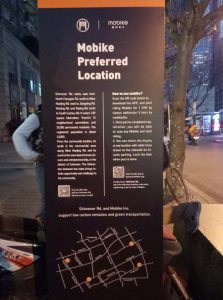
Without our millenial traveling companion Bamboo Sun we wouldn’t have known what to do. He downloaded several different bikeshare apps to compare. We went with Mobike because they are the most plentiful and had two models. You just scan the QR code which unlocks the bike. It also tracks your route, mileage and time, and when you finish your ride and close the frame mounted lock you pay on-line. Ultimately however, Steve used Ofo because one of their models had a quick release adjustable seat post (he’s 6’3″). The Ofo app gives you the combination to manually unlock the bike and doesn’t track your mileage.
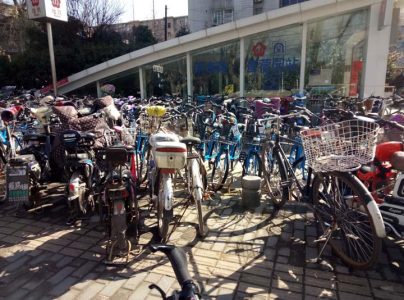
The advantage the private shares have over the municipal ones that use a smart card is that you can pick them up and drop then off pretty much anywhere, not just at a docking station, and you don’t have to obtain a smart card, which makes it easier for foreigners. The way this works is to saturate an area with many bikes. When you finish your ride and lock the bike it registers on the website as available. Anyone else can use it, as they are locatable by GPS on the website, even in walk-out restaurant basements. Sorry restaurant worker, but someone rode off on the one Bamboo had been riding so it was fair game. We noticed other instances of people trying to hide bikes for later use too, but the gps tracker gives the location away, so you may or may not leave on the same bike you came with.
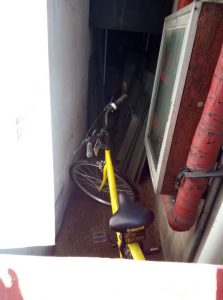
The biggest drawback we found? The bikes were tiny for us. I felt like I was riding the bicycle equivalent of a clown car. My knees reached to my waist when pedaling and both feet easily rested flat on the ground when stopped. This affected steering, which I didn’t expect, and made even slight rises something everyone seemed to dismount and walk, as you have very little power riding like that. I finally stood up to pedal over a bridge, which seemed to startle my traveling companions (except for Steve.)
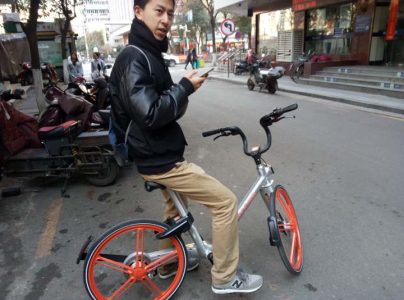
Wheel sizes of the bike shares were mainly 24″ and 26″, with some smaller. The Chinese are generally smaller people, and at 5’5″ I’m the size of an average man here but there are many taller Chinese too, especially among younger generations. All bikes should have adjustable seat height. Steve of course had an even tougher time with bike sizing than I did.
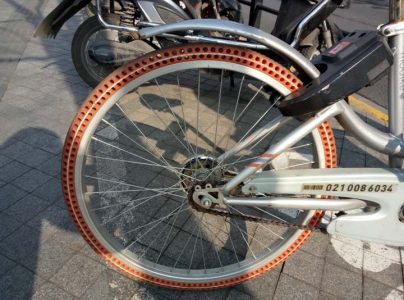

Bravo for describing some bike share systems in China. Perhaps Lincoln will have a bike share system soon.
Steven, Lincoln’s bike share is coming. Rumor has it that it will go live this summer.
Janine, thank you for the update. Your posts modify my news-influenced perspective of China — in a good way.
People are just people trying to live their lives anywhere you go.
“Ideally, travel broadens our perspectives personally, culturally, and politically. Suddenly, the palette with which we paint the story of our lives has more colors.”
― Rick Steves, Travel as a Political Act